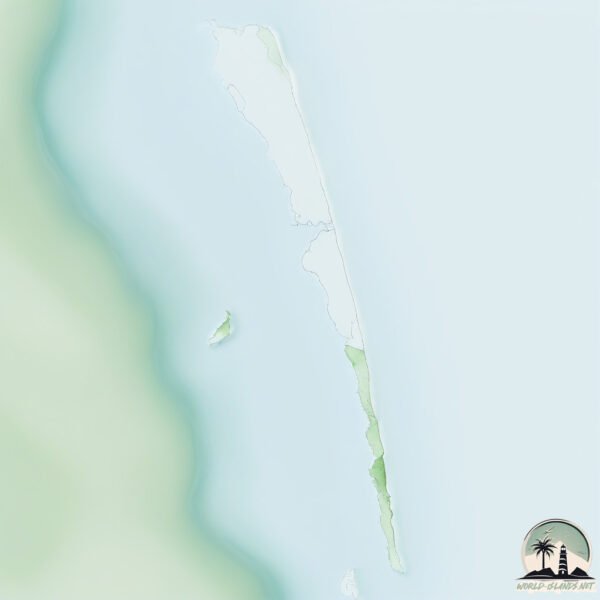Welcome to South Padre , a Dry island in the Gulf of Mexico, part of the majestic Atlantic Ocean. This guide offers a comprehensive overview of what makes South Padre unique – from its geography and climate to its population, infrastructure, and beyond. Dive into the details:
Geography and size of South Padre
Size: 141.4 km²Coastline: 154.9 kmOcean: Atlantic OceanSea: Gulf of MexicoContinent: North America
South Padre is a Large Island spanning 141 km² with a coastline of 155 km.
Archipel: –
Tectonic Plate: North America – Covers North America and parts of the Atlantic and Arctic Oceans, characterized by diverse geological features and varying levels of seismic activity.
The geographic heart of the island is pinpointed at these coordinates:
Climate and weather of South Padre
Climate Zone: DryClimate Details: Hot Semi-Arid (Steppe) ClimateTemperature: Hot
Climate Characteristics: Features hot summers and mild to warm winters. Receives more rainfall than hot deserts but less than tropical savannas, leading to a somewhat more varied landscape.
Topography and nature of South Padre
Timezone: UTC-06:00Timezone places: America/ChicagoMax. Elevation: 7 m Mean Elevation: 1 mVegetation: WetlandTree Coverage: 23%
The mean elevation is 1 m. The highest elevation on the island reaches approximately 7 meters above sea level. The island is characterized by Plains: Flat, low-lying lands characterized by a maximum elevation of up to 200 meters. On islands, plains are typically coastal lowlands or central flat areas.
Dominating Vegetation: Wetland
Vegetation: 13 vegetation zones – Exceptionally Diverse Island
Infrastructure and Travelling to South Padre
Does the island have a public airport? no .
Does the island have a major port? no .
The mean population of South Padre is 25 per km². South Padre is Gently Populated. The island belongs to United States of America .
Continuing your journey, Mustang and Padre is the next notable island, situated merely km away.
South Padre Island Texas: 10 BEST Things To Do In 2025 (Travel Guide)
South Padre Island, located off the coast of Texas, is a popular beach destination known for its stunning beaches, warm waters, ...
South Padre Island Texas: 10 BEST Things To Do In 2025 (Travel Guide)
South Padre Island, located off the coast of Texas, is a popular beach ...
South Padre Island, located off the coast of Texas, is a popular beach destination known for its stunning beaches, warm waters, ...
Discover What To Do In South Padre Island, Texas!
Planning a trip to South Padre Island? Check out my handpicked Amazon ...
Planning a trip to South Padre Island? Check out my handpicked Amazon list for beach travel essentials, water gear, and South ...
The only tropical destination in Texas: South Padre Island
United States of America is classified as Developed region: G7: Group of Seven – Major advanced economies, including Canada, France, Germany, Italy, Japan, the United Kingdom, and the United States. The level of income is High income: OECD.
News – Latest Updates and Headlines from South Padre
Stay informed with the most recent news and important headlines from South Padre. Here’s a roundup of the latest developments.
Loading...
Please note: The data used here has been primarily extracted from satellite readings. Deviations from exact values may occur, particularly regarding the height of elevations and population density. Land area and coastline measurements refer to average values at mean high tide.

